Sacred Heart Roman Catholic Church
Claremont Avenue near Park Avenue
New York City: Brooklyn, NY
OHS convention: 1969
Images
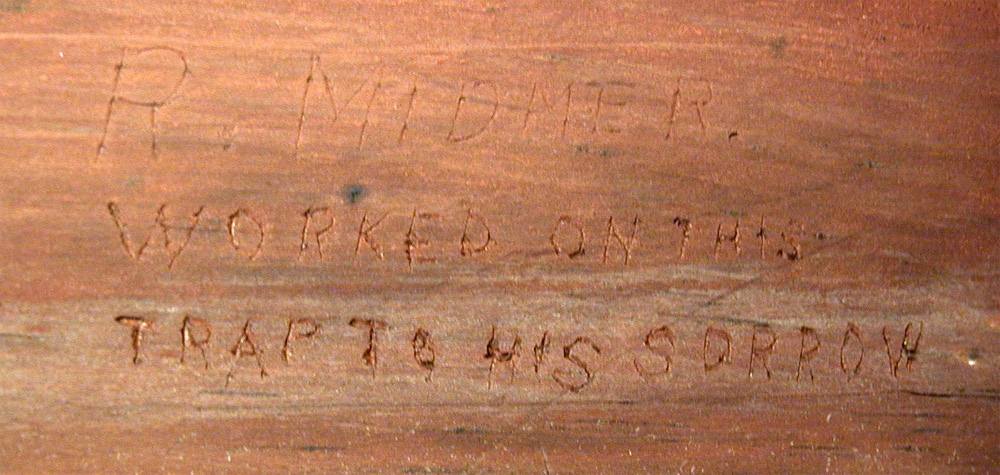 after 1969 - Graffiti by Reuben Midmer (Photograph from an archival source: NYC AGO Pipe Organ Project, submitted by Paul R. Marchesano/Paul R. Marchesano)
after 1969 - Graffiti by Reuben Midmer (Photograph from an archival source: NYC AGO Pipe Organ Project, submitted by Paul R. Marchesano/Paul R. Marchesano)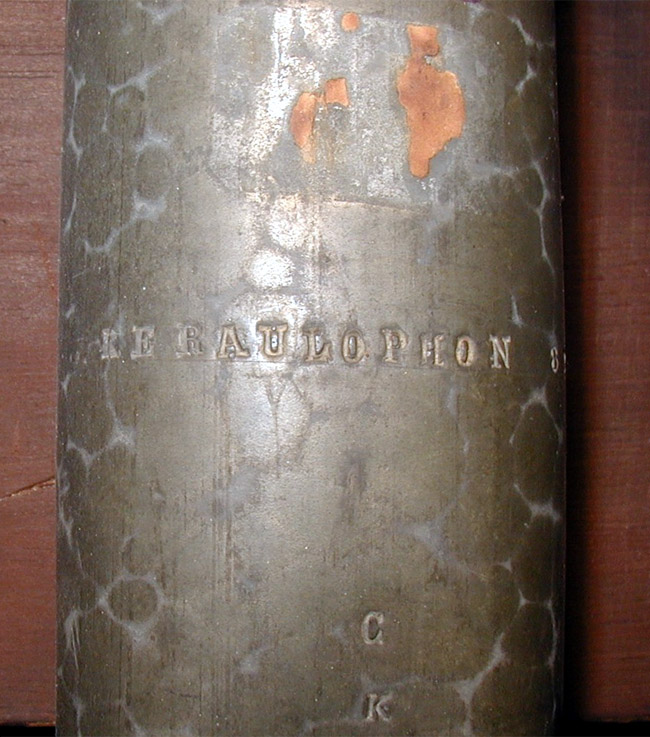 after 1969 - Low C of the 4' Clarine (Keraulophon) showing what remains of the famous Henri Zimmerman, Paris label (Photograph from an archival source: NYC AGO Pipe Organ Project, submitted by Paul R. Marchesano/Paul R. Marchesano)
after 1969 - Low C of the 4' Clarine (Keraulophon) showing what remains of the famous Henri Zimmerman, Paris label (Photograph from an archival source: NYC AGO Pipe Organ Project, submitted by Paul R. Marchesano/Paul R. Marchesano)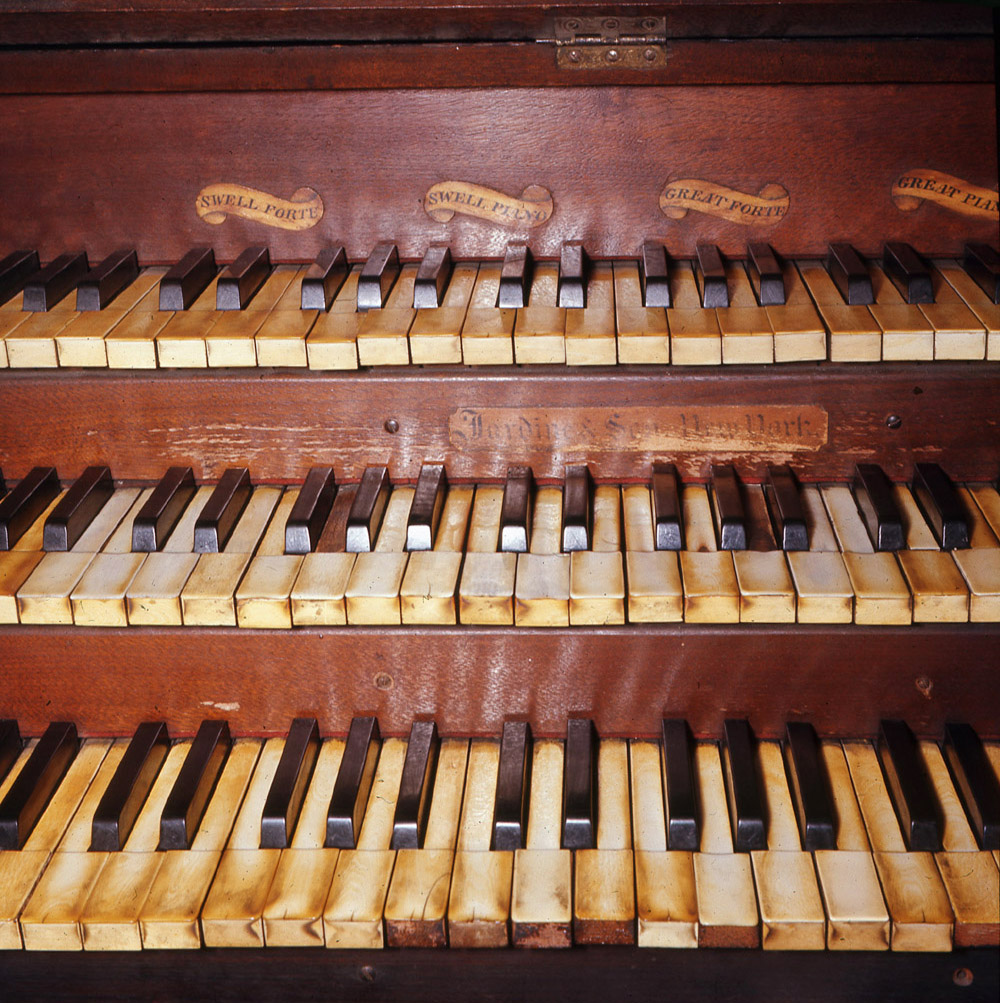 after 1969 - Keyboards (Photograph from an archival source: NYC AGO Pipe Organ Project, submitted by Paul R. Marchesano/Paul R. Marchesano)
after 1969 - Keyboards (Photograph from an archival source: NYC AGO Pipe Organ Project, submitted by Paul R. Marchesano/Paul R. Marchesano)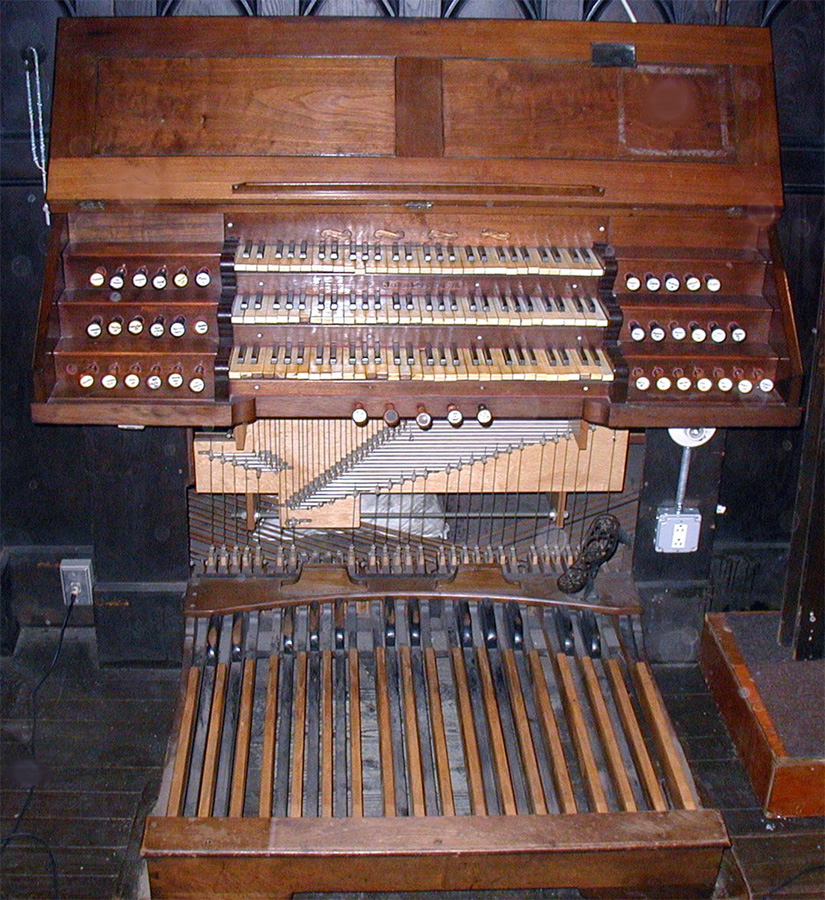 after 1969 - Console (Photograph from an archival source: NYC AGO Pipe Organ Project, submitted by Paul R. Marchesano/Paul R. Marchesano)
after 1969 - Console (Photograph from an archival source: NYC AGO Pipe Organ Project, submitted by Paul R. Marchesano/Paul R. Marchesano)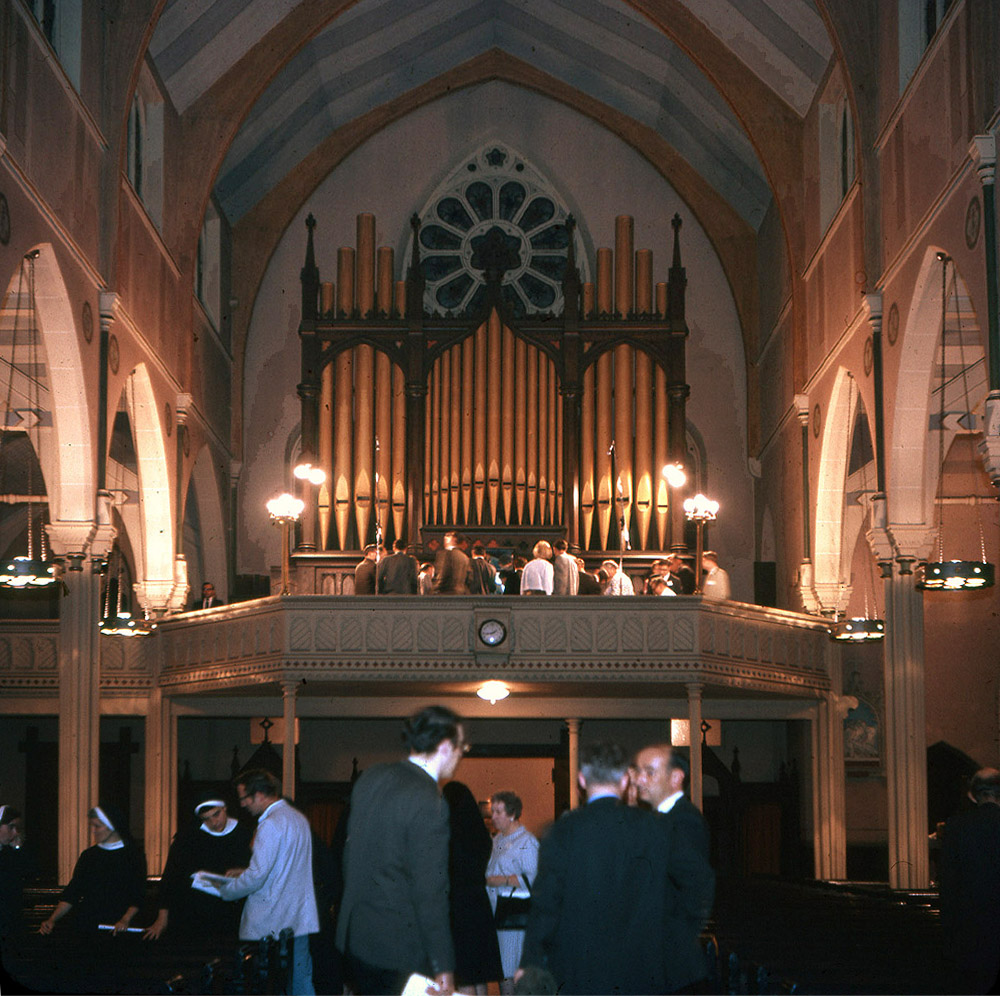 1969 (?) - Organ case in loft (Photograph from an archival source: NYC AGO Pipe Organ Project, submitted by Paul R. Marchesano/Paul R. Marchesano)
1969 (?) - Organ case in loft (Photograph from an archival source: NYC AGO Pipe Organ Project, submitted by Paul R. Marchesano/Paul R. Marchesano)
Consoles
Main
- 3 manuals
- 34 stops
- 4 divisions
- Key action Type: Mechanical (Details Unknown)
- Stop action Type: Mechanical
- Manual compass: 58 notes
- Pedal compass: 30 notes
Notes
2004-10-30 - Status Note: There 1974 -Database Manager
2004-10-30 - Some emergency repairs by Hartman-Beaty for 1969 OHS convention. Compass 58/30. Cost was $15,000. Wind provided by two men. -Database Manager
2010-11-25 - Updated through on-line information from Connor Annable. -Database Manager
2022-10-25 - The George Jardine & Son organ in Sacred Heart Church dates from the completion of the building in 1876 and is installed in a rear gallery case measuring approximately 25 feet high by 12 feet deep by 20 feet wide. Notable as one of Jardine's quality installations, this organ has mahogany tables for the chests and much of the pipe metal is spotted, indicating about a 60% tin content. Of special interest is the 4' Gamba Clarion stop on the Great, a labial (reedless) rank that was used in place of a Clarion. The Low C pipe of the "Clarine" stop is stamped 'Keraulophon' and had a label of a Paris pipe maker, Henri Zimmerman. Total cost of the organ was $7,535.
On Sunday evening, September 17, 1876, the organ was formally opened with a concert presented by Professor John M. Loretz, Jr., organist of the church, who began with a prelude and fugue by Bach. Sharing the program was "an excellent chorus of thirty voices," directed by Professor L. Weinstein, and six vocal soloists. The Brooklyn Eagle (Sept. 18, 1876) reported that Prof. Loretz "filled the building with grand music which held the undivided attention of the audience whenever he played." The review continued with:
"The finest playing of the evening was then done by Professor Loretz, who performed a symphony entitled, "Music of Nature," which was a series of sketches in which were musically represented. Morning: rising of the sun, warbling of birds, rustling of leaves and peasant's song. Noon: storm, frightened birds, rain, hail, etc., all of which finally died away, leaving the evening calm and beautiful, when the notes of the cuckoo, nightingale, pipers gathering their flocks, hymns of shepherds were heard. The music was excellently rendered, and well represented the ideas which it intended to convey."
This organ is the largest extant Jardine organ from the 1870s, although it is not in original condition. Over the years several stops were changed and several labels replaced. The organ has received restorative repairs by Hartman-Beaty (1969, 1975), Jack Alberti (1978), Andover (1985) and David Schmauch (2001).
-- NYC AGO Pipe Organ Project -Paul R. Marchesano
Stoplist
Typed stoplist from the OHS PC Database. Source: Source not recorded Date not recorded
Sacred Heart Church, Brooklyn, NY
c. 1877 Jardine, Op. 1019
(Stoplist: David Schnute from T 13:3:11)
(Parentheses following stopname lists current label if different face)
GREAT (first manual; 58 notes)
16' Double Diapason (8' Cello)
8' Open Diapason
8' Gamba
8' Melodia (8' Melodia Dolce)
4' Principal (4' Octav)
4' Flute Harmonic (4' Quintaton)
3' Twelfth
2' Fiteenth
II, III Mixture (169 pipes; 1-12:, 19,22; 13-36: 16,19,22; 37-58: 8,12,15) (2 2/3' Quinte)
4' Clarine (4' Viola Dolce)
8' Trumpet
SWELL (enclosed, 2nd manual, 58 notes)
16' Bourdon Bass (12 pipes) (blank)
16' Bourdon Treble (tc-46 pipes) (16' Subbass dolce)
8' Open Diapason
8' Stop Diapason
8' Clariana (blank)
4' Principal (Viola)
4' Flute (blank)
2' Piccolo
II, III Cornet (162 pipes; 1-12: 19,22; 13-24: 17,19,22; 25-43: 12,15,17; 44-58: 8,12,15) (2 2/3" Mixtur)
8' Cornopean
8' Vox Humana (8' Vox Humana)
CHOIR (3rd manual, 58 notes)
8' Gamba (blank)
8' Clarabella
8' Stopped Diapason
4' Flute
4' Gemshorn
2' Flageolet
2' Stop Diapason (8' Clarinet)
PEDAL (30 notes)
16' Open Diapason (16' Bourdon Bass)
16' Bourdon
8' Violincello (blank)
4' Flute
16' Trombone
Couplers (drawknobs under Great manual)
Great to Pedal (removed)
Swell to Pedal (removed)
Choir to Pedal (removed)
Swell to Great
Choir to Swell
"The names of the ranks are taken from the pipework or exterpolated [sic] from other Jardine instruments of the period, as many of the original ivory inserts have beeen lost and not a few replaced by quite different-looking new plates, often with little regard for accuracy." The article also lists the labeled names.
"Apart from the uniqueness of this instrument as Jardine's only surviving three-manual organ in the New York area, the instrument is of interest for the fine workmanship evident in its construction. Despite decades of minimal maintenance, the organ still shows the Jardines' capacity for fine organbuilding. The three pedal couplers have been removed, reportedly due to a tendency of their mechanism to jam; an unfortunate operation in any case, for the organ hardly has an independent pedal."
/ds/
Documents
Other Links
Regrettably, it is not possible to display the information about the sponsor of this pipeorgandatabase entry or if there is a sponsor. Please see About Sponsors on Pipe Organ Database.




